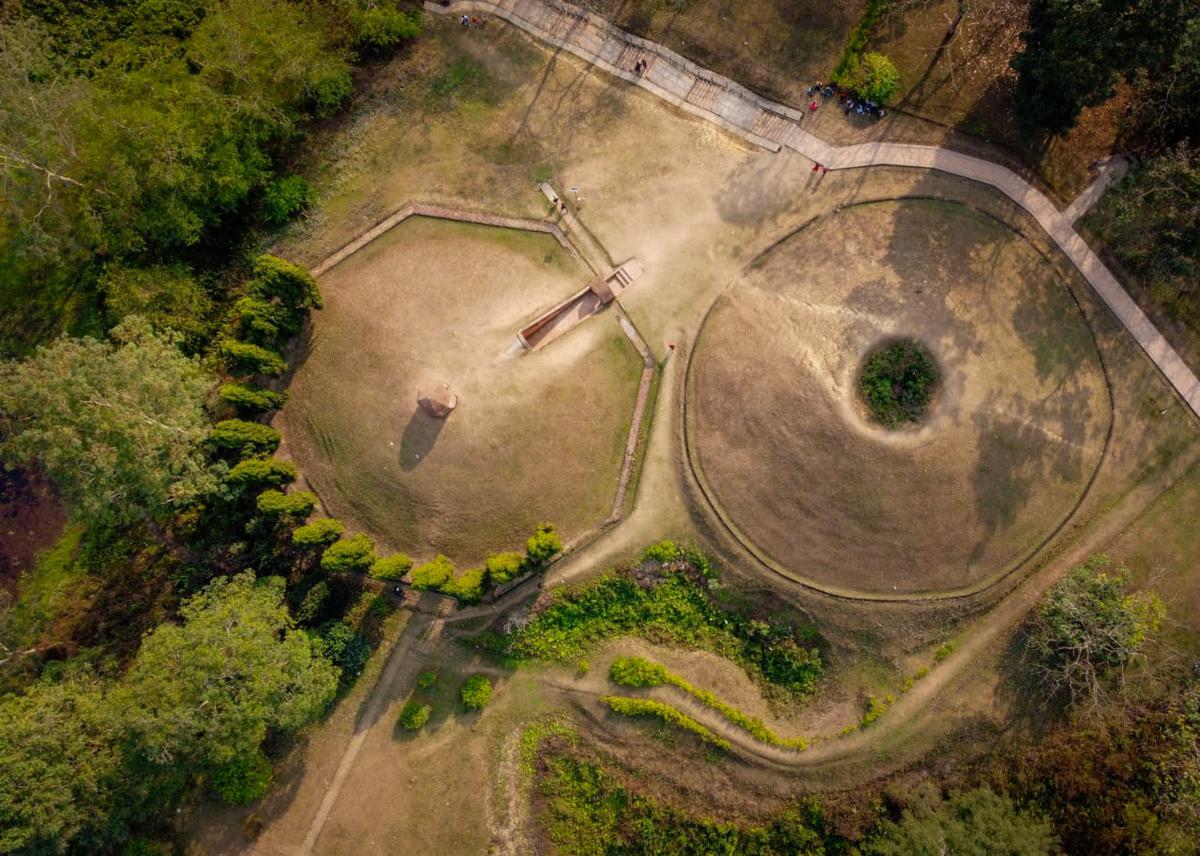News Highlights:
- The Centre has decided to nominate Assam’s Charaideo Maidams, the Ahom equivalent of the ancient Egyptian pyramids, for the UNESCO World Heritage Centre.
- The maidams represent the late medieval (13th-19th century CE) mound burial tradition of the Tai Ahom community in Assam.
Charaideo Maidams:
- About:
- Charaideo, commonly knowns as the pyramids of Assam, was the original capital of the Ahom Kings, built by Chaolung Sukhapa, the founder of the dynasty in about 1229 CE.
- This place is located at the foothills of Nagaland.
- Its distance from the historical town of Sivasagar is about 30km. It is situated towards the east of this town
- Though the capital of the Ahom Kingdom moved many times, Charaideo remained the symbolic centre.
- It contains sacred burial grounds of Ahom Kings and queens and is also the place of the ancestral Gods of Ahoms.
- Maidams (tombs):
- The Ahoms preferred to place the departed family members at Charaideo, where the first king Sukapha was laid to rest.
- The historical chronicles inform that wives, attendants, pet animals and vast quantities of valuables were buried with the departed kings.
- The Charaideo Maidams enshrine the mortal remains of the members of the Ahom royalty, who used to be buried with their paraphernalia.
- After the 18th century, the Ahom rulers adopted the Hindu cremation method and began entombing the cremated bones and ashes in a Maidam at Charaideo.
- Out of 386 Maidams explored so far, 90 royal burials at Charaideo are the best preserved, representative of and the most complete examples of the mound burial tradition of the Ahoms.
- 42 tombs (Maidams) of Ahom Kings and queens at Charaideo hillocks are comparable to the pyramids of Egypt.
- They are objects of wonder, revealing the excellent architecture and skill of the sculptors and mansions of Assam of the medieval days.
- Architecture details:
- Architecturally, it comprises a massive underground vault with one or more chambers having a domical superstructure.
- A heap of earthen mounds covers it; externally, it appears to be a hemispherical mound.
- At the top of the mound, a small open pavilion chow-chali is provided.
- An octagonal dwarf wall encloses the whole maidam.
- Slow Extinction:
- The lack of a preservation scheme from the government is the reason for the slow extinction of the remains of the temples, as earth cutting the maidams and hillocks by ignorant illegal setters is causing irreparable damage to maidams.
- Archeological Survey of India (ASI) has badly damaged a big maidam while exploring the mystery of maidams.
- Encroachment by people causes ongoing damage.
- Bali maidams near Nimogarah were plundered by Britishers.
- The sites where suffered from robbers.

Ahom Kingdom:
- About:
- The Ahom Kingdom was a late medieval kingdom established in 1228 in the Brahmaputra Valley in Assam.
- It is famous for its multi-ethnic makeup and for retaining its sovereignty for 600 years fighting at one point fighting the Mughal Empire to preserve its independence successfully.
- The foundations of the Ahom Kingdom were laid when the first Ahom king, Chaolung Sukaphaa, came from Mong Mao, a kingdom located on the easternmost reach of the Indian subcontinent.
- Significance:
- Sukapha successfully assimilated different communities and tribes. He developed very cordial relationships with the tribal communities of Assam, especially the Sutias, the Morans and the Kachoris.
- He is widely referred to as the architect of ‘Bor Asom’ or ‘Greater Assam’ because he consolidated power, culture and religion in the region and managed to group a diverse mix of people in such a politically sensitive region crisscrossing South Asia and South-East Asia.
- Assam celebrates ‘Asom Divas’ on 2nd December yearly to commemorate Sukapha and his rule.
Pic Courtesy: The Hindu
Content Source: The Hindu



